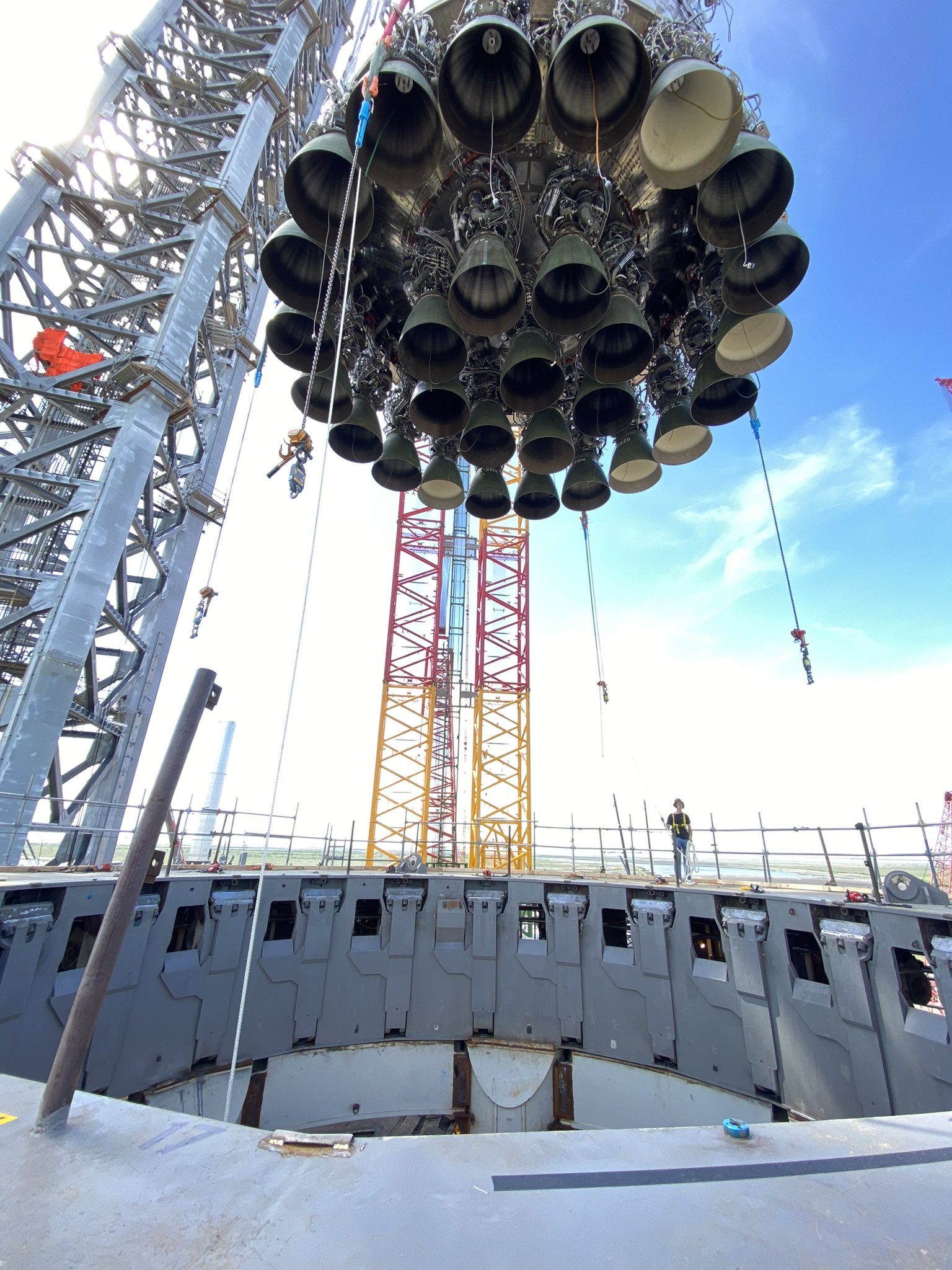SpaceX lifts huge Super Heavy rocket onto launch stand (photos)

Super Heavy is on the launch stand.
On Tuesday (Aug. 3), SpaceX rolled its first true Super Heavy booster from its assembly facility in South Texas a few kilometers down the road to its launch site. And on Wednesday (Aug. 4), the company hoisted the 230-foot-tall (70 meters) rocket onto the launch stand using a giant crane.
SpaceX founder and CEO Elon Musk was on hand to watch the action, and he tweeted out some photos to give the rest of us a taste. On Wednesday, for example, he posted three pictures of the Super Heavy crane lift, including one providing an up-close look at the rocket's 29 Raptor engines.
Related: SpaceX's Starship and Super Heavy rocket in pictures

Super Heavy is the first stage of SpaceX's two-stage, fully reusable Starship system, which the company is developing to send people and cargo to Mars and other distant destinations. The upper stage is a 165-foot-tall (50 m) spacecraft known as Starship.
Starship spacecraft prototypes have flown before. This past May, for instance, a vehicle known as SN15 aced a 6.2-mile-high (10 kilometers) test flight into the South Texas sky. Super Heavy has yet to fly, but SpaceX aims to change that soon.
The recently moved Super Heavy, known as Booster 4, is being prepped for an orbital test flight, which will also feature the SN20 Starship prototype. (On Tuesday, Musk tweeted a photo of SN20's six Raptor engines, which technicians had just installed.)
Breaking space news, the latest updates on rocket launches, skywatching events and more!

Booster 4 will splash down in the Gulf of Mexico a few minutes after liftoff, whereas SN20 will power itself to orbit, make one lap around Earth, and then come down in the Pacific Ocean, near the Hawaiian island of Kauai.
SpaceX wants to launch that mission in the next few months, but it's unclear exactly when it will get off the ground. The company still needs to perform a variety of checkouts and tests on Booster 4 and SN20, and there are some logistical boxes to tick as well. The U.S. Federal Aviation Administration is currently conducting an environmental review of Starship's launch operations, for example, and its end date is unknown.
Mike Wall is the author of "Out There" (Grand Central Publishing, 2018; illustrated by Karl Tate), a book about the search for alien life. Follow him on Twitter @michaeldwall. Follow us on Twitter @Spacedotcom or Facebook.

Michael Wall is a Senior Space Writer with Space.com and joined the team in 2010. He primarily covers exoplanets, spaceflight and military space, but has been known to dabble in the space art beat. His book about the search for alien life, "Out There," was published on Nov. 13, 2018. Before becoming a science writer, Michael worked as a herpetologist and wildlife biologist. He has a Ph.D. in evolutionary biology from the University of Sydney, Australia, a bachelor's degree from the University of Arizona, and a graduate certificate in science writing from the University of California, Santa Cruz. To find out what his latest project is, you can follow Michael on Twitter.
